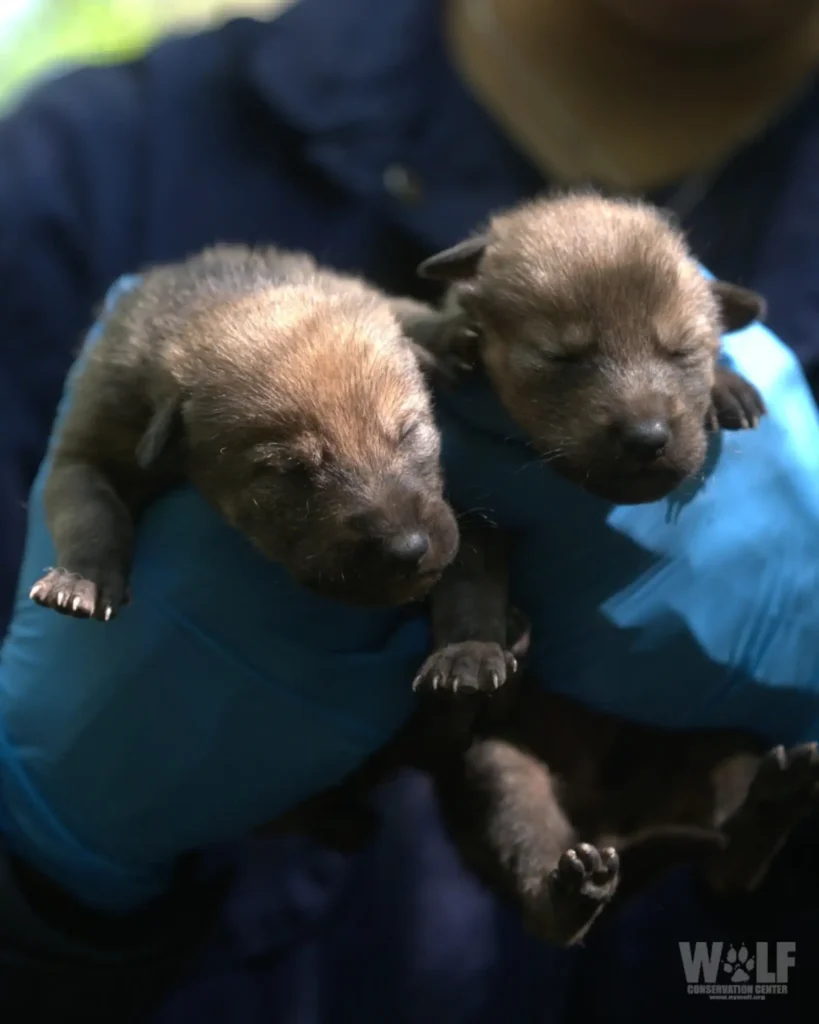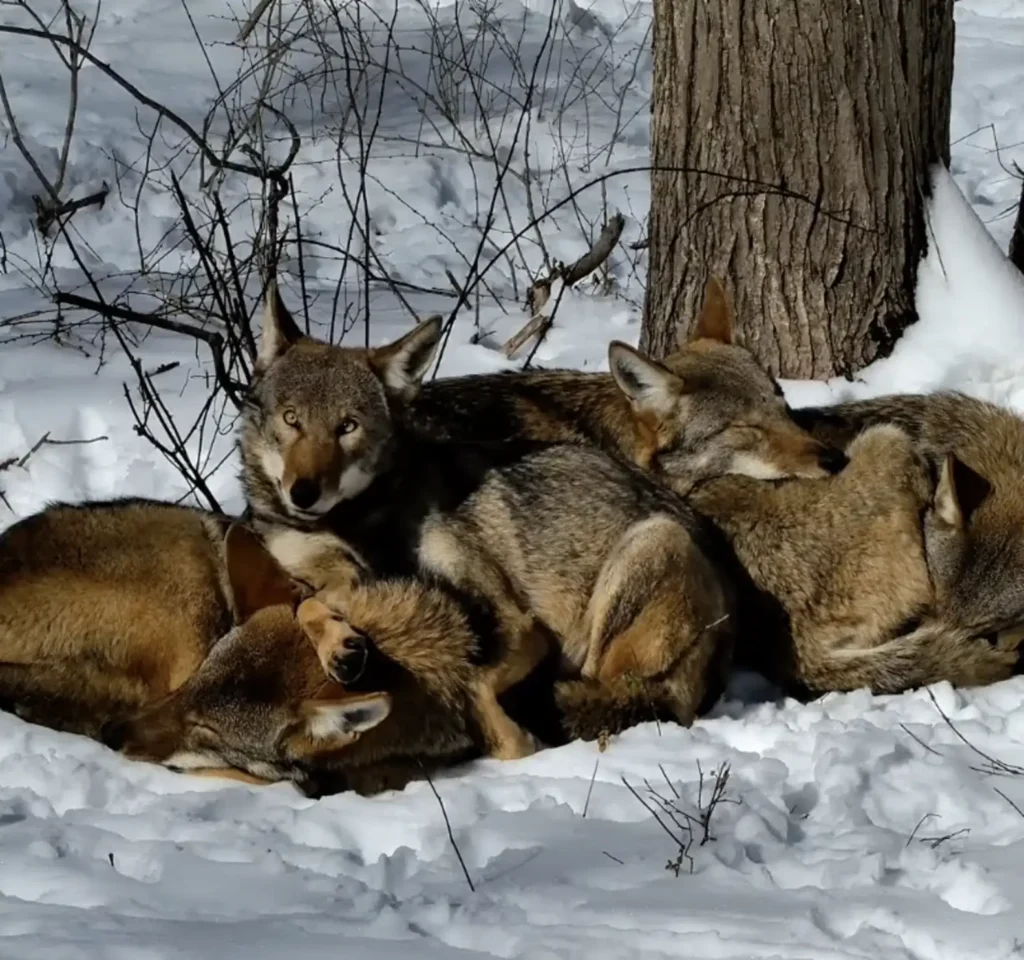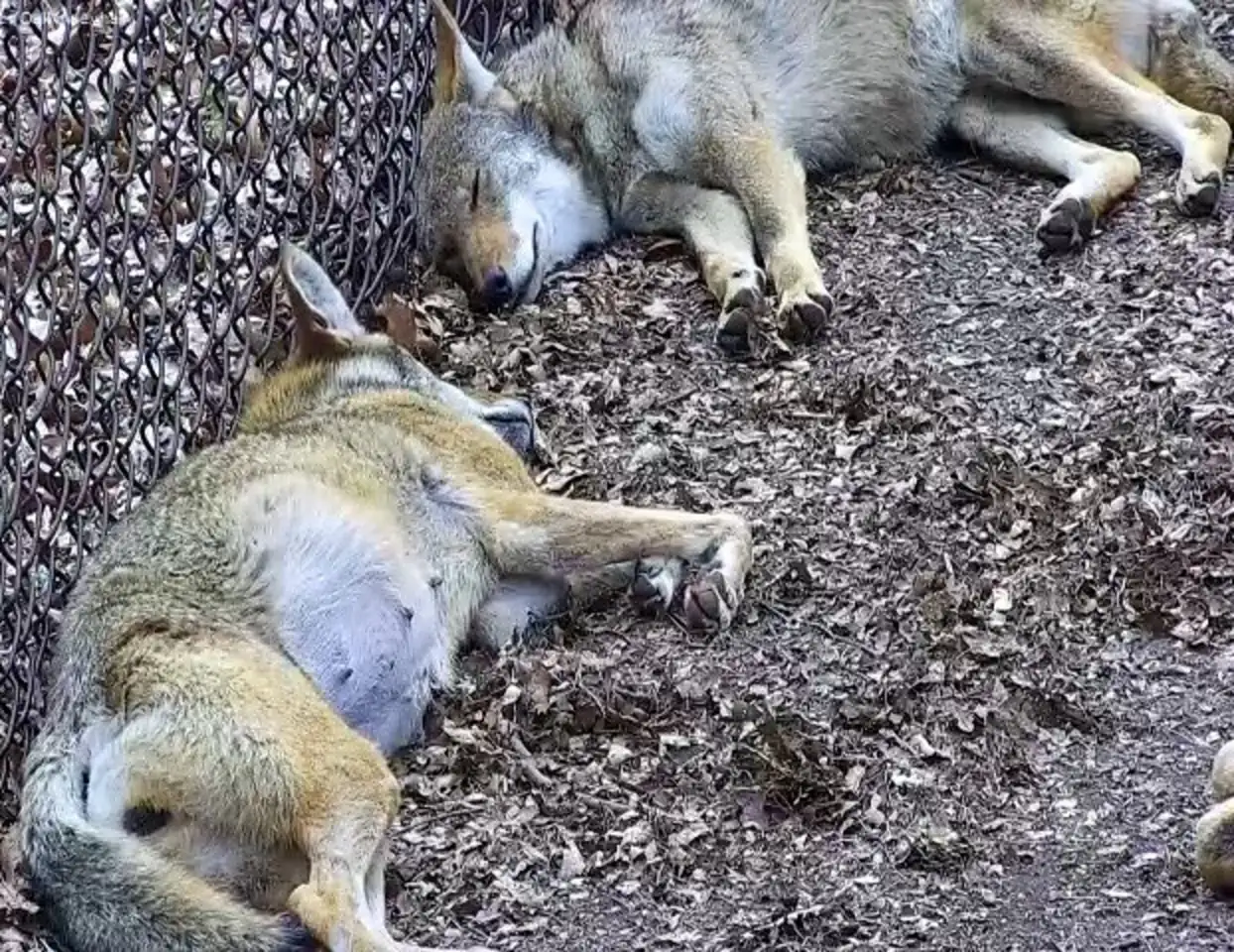There are only 16 of them left in the wild.
There’s always something inspiring unfolding at the Wolf Conservation Center (WCC) in South Salem, New York—but this spring, something truly historic happened. Through the soft rustle of forest trees and under the quiet watch of night, the center welcomed some of the rarest newborns in the animal kingdom: six precious red wolf pups.
It all began a few weeks earlier, when staff members noticed that one of their red wolves, Oak, was looking a bit rounder than usual. Oak, who had given birth to her first litter just last year with her mate Adeyha, seemed poised to become a mother once again. The team at WCC began keeping a close eye on her enclosure via outdoor cameras, eagerly awaiting signs of new life.

Then, late one April night, the moment they had been hoping for arrived.
“Under the cover of darkness, Oak moved her pups one at a time from the den to another location in her enclosure,” WCC wrote on Facebook.
In the stillness of the night, Oak gently carried each tiny pup in her mouth, instinctively relocating them to a more secure spot. The next morning, WCC staff carefully entered the enclosure to assess the new arrivals. What they found filled them with joy: six healthy pups—three boys and three girls—nestled safely with Oak, Adeyha, and their older siblings from last year’s litter.
But this was more than just a heartwarming family moment. It was a moment of hope for an entire species.
“With just 16 red wolves currently known to live in the wild, these pups are the future of their critically endangered species,” the WCC team explained.

As the weeks went on, the center continued to monitor the growing family via camera, observing Oak’s nurturing instincts in action. She devoted herself completely to the care of her new pups, barely leaving their side.
“As with all wolf moms, Oak is proving to be nurturing and loving,” said Regan Downey, WCC’s director of education. “She spent the first few weeks primarily with the pups, nursing them and encouraging them to stay relatively hidden as they started to gain their footing. Even now, as the pups are starting to explore the world around them, Oak is never far away and keeps a watchful eye on her pups.”
But Oak isn’t raising the pups alone. In a heartwarming twist of nature, her yearling offspring—Sassafras, Tupelo, Cedar, Maple, and Juniper—have stepped into their new roles as helpful older siblings. Their participation reflects the cooperative spirit of a true wolf pack.
“One of the things we’re especially excited about is that her yearling children are able to help raise their younger siblings—a valuable learning experience,” Downey explained. “They’ll teach their siblings how to play, how to hunt, how to howl (basically, how to be wolves!), and when they have pups of their own in the future, they’ll have this experience as a reference point. This is similar to how wolf packs function in the wild, as well.”
Under the guidance of Oak and the older pups, the newborns are already hitting important milestones. They’ve begun exploring their surroundings, growing more curious and confident with each passing day. And then, one day, the forest rang out with the soft, high-pitched sound of their very first howls.
“These tiny howls may be small, but they represent something big: the next generation of red wolves finding their voices,” WCC wrote. “Every milestone like this is a step forward for this critically endangered species.”
For the team at the Wolf Conservation Center, watching this multi-generational pack work together is both thrilling and deeply moving. It’s a glimpse into the natural behaviors and bonds that define wild wolf families—and a powerful reminder of what’s at stake in the fight to save red wolves from extinction.
While Oak has proven to be an exceptional and capable mother, the shared effort from her older pups has made the journey even more beautiful.
“Raising pups is truly a family affair!” Downey said.
And at WCC, this family is not only thriving—they’re giving hope to an entire species.
